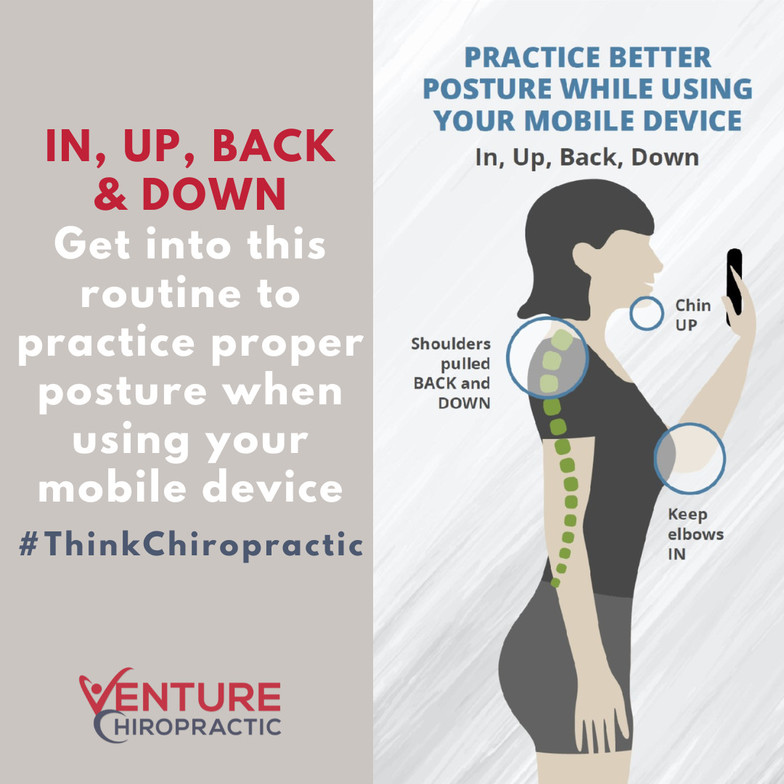
What is Posture?
Posture refers to the alignment and positioning of the body when sitting, standing, or moving. Good posture involves maintaining the proper curvature of the spine, with the head balanced directly over the shoulders, and the shoulders aligned over the hips. It is essential for overall health and well-being as it helps to distribute the body's weight evenly, reduces strain on muscles and joints, and promotes proper breathing and circulation. Maintaining good posture is crucial for preventing various musculoskeletal issues, such as back pain, neck pain, headaches, and fatigue. It also contributes to better balance, improved digestion, and increased energy levels. Poor posture, on the other hand, can lead to muscle imbalances, joint dysfunction, and chronic pain. Common causes of bad posture include sedentary lifestyles, prolonged sitting or standing, poor ergonomics, obesity, muscle weakness or imbalances, and injuries or conditions affecting the spine or joints. Stress, poor sleeping habits, and the use of electronic devices for extended periods can also contribute to poor posture over time.
Signs of Bad Posture
Bad posture can manifest in various physical symptoms and indicators. Some common signs include:
- Rounded Shoulders and Forward Head Posture: This posture, also known as "text neck," is characterized by the head being tilted forward and the shoulders being rounded inward. It often results from prolonged sitting or looking down at electronic devices.
- Uneven Hips or Shoulders: When one shoulder or hip appears higher than the other, it can indicate a misalignment in the spine or an imbalance in muscle tension.
- Excessive Curvature of the Spine: An exaggerated inward or outward curve in the lower back (lordosis or swayback) or an excessive rounding of the upper back (kyphosis or hunchback) can be signs of poor posture.
- Muscle Imbalances and Tightness: Bad posture can lead to muscle imbalances, where some muscles become overly tight while others become weak and stretched. Common areas affected include the neck, shoulders, upper back, and hip flexors.
- Pain and Discomfort: Poor posture can contribute to or exacerbate pain in various areas, such as the neck, shoulders, upper and lower back, and even the legs and feet.
Long-term effects of bad posture can be significant, including:
- Increased stress on joints, muscles, and ligaments, potentially leading to chronic pain and injury.
- Restricted breathing and reduced lung capacity due to compression of the chest cavity.
- Digestive issues, as poor posture can affect the position and function of internal organs.
- Headaches and fatigue, often caused by muscle tension and strain.
- Reduced flexibility and mobility, which can impact overall physical function and quality of life.
Addressing poor posture early is crucial to prevent these long-term consequences and promote overall health and well-being.
Role of Chiropractors in Posture Correction
Chiropractors play a crucial role in addressing and correcting poor posture through various techniques and approaches. Their primary focus is on restoring proper spinal alignment, which is often the root cause of postural imbalances. By realigning the spine, chiropractors can help alleviate muscle tension, reduce stress on joints, and improve overall body mechanics. One of the main techniques used by chiropractors for posture correction is spinal manipulation or adjustment. Through precise and controlled movements, chiropractors apply gentle force to specific areas of the spine to correct misalignments and restore proper joint motion. This can help relieve pressure on nerves, improve range of motion, and promote better posture. In addition to spinal adjustments, chiropractors may employ other techniques such as soft tissue therapy, stretching exercises, and postural retraining. Soft tissue therapy involves massaging and manipulating the muscles, tendons, and ligaments to release tension and improve mobility. Stretching exercises are designed to lengthen and strengthen specific muscle groups, promoting better alignment and flexibility. Postural retraining is another essential aspect of chiropractic care for posture correction. At Venture we take education seriously. We educate patients on proper sitting, standing, and sleeping postures, as well as how-to make ergonomic modifications in the workplace or home environment. By making conscious efforts to maintain good posture throughout daily activities, individuals can reinforce the benefits of chiropractic treatment and prevent future postural issues.
Chiropractic care for posture correction offers numerous benefits. Improved spinal alignment and posture can alleviate pain and discomfort in the neck, shoulders, and back. It can also enhance overall body mechanics, reducing the risk of injuries and promoting better physical performance. Additionally, proper posture has been linked to improved breathing, digestion, and circulation, contributing to overall well-being.
Exercises and Stretches for Better Posture
While chiropractic adjustments can help correct misalignments and improve posture, complementary exercises and stretches are often recommended to reinforce the benefits and maintain good posture over time. Consistent practice of targeted exercises and stretches can help strengthen the muscles that support proper spinal alignment, increase flexibility, and reduce the risk of posture-related issues.
Some common exercises and stretches we recommend at Venture for better posture include:
1. Cervical Retractions: This exercise helps strengthen the neck muscles and improve forward head posture. Gently pull your head back, creating a double chin, and hold for a few seconds before releasing.
2. Shoulder Rolls: Rolling your shoulders forward and backward can help improve shoulder posture and relieve tension in the upper back and neck area.
3. Chest Stretches: Tight chest muscles can contribute to rounded shoulders and poor posture. Stretches like the door frame stretch or the standing chest opener can help counteract this tightness.
4. Lower Back Stretches: Exercises like the child's pose or the seated spinal twist can help alleviate lower back tightness and improve overall spinal alignment.
5. Core Strengthening Exercises: A strong core, including the abdominal and back muscles, is essential for maintaining good posture. Planks, bridges, and other core exercises can help in this regard. It's important to note that consistency is key when it comes to posture exercises and stretches. We often recommend incorporating these exercises into a daily routine for best results. Additionally, we may provide personalized recommendations based on an individual's specific posture issues and overall health condition.
Ergonomics and Posture at Work
Maintaining good posture while at work is crucial for preventing musculoskeletal issues and reducing strain on the body. Proper ergonomics involves designing workstations and environments that promote neutral body positioning and minimize the risk of injury or discomfort.
Here are some tips for setting up an ergonomic workspace and maintaining good posture at work:
Workstation Setup
- Adjust your chair height so that your feet are flat on the floor, and your thighs are parallel to the ground.
- Position your computer monitor at eye level, about an arm's length away, to avoid straining your neck.
- Use a keyboard tray or pull your keyboard close to you to keep your wrists straight while typing.
- Consider using a standing desk or adjustable workstation to alternate between sitting and standing throughout the day.
Posture Tips
- Keep your shoulders relaxed and avoid hunching forward or leaning to one side.
- Maintain a slight inward curve in your lower back by using a lumbar support or a small pillow.
- Take frequent breaks to stand, stretch, and walk around, as prolonged static postures can lead to muscle fatigue and discomfort.
- Avoid crossing your legs or sitting on one leg, as this can cause imbalances and strain.
- Be mindful of your posture during meetings or when using a laptop, as it's easy to slouch or adopt awkward positions.
- Watch this video on easy stretches to perform while at work.
Ergonomic Accessories
- Use an ergonomic keyboard and mouse to reduce strain on your wrists and forearms.
- Consider using a footrest or a desk riser to improve leg positioning and circulation.
- Invest in an ergonomic chair with adjustable lumbar support and armrests to promote proper spinal alignment.
- Use a document holder or stand to position reading materials at eye level, reducing neck strain.
By implementing proper ergonomics and maintaining good posture at work, you can reduce the risk of musculoskeletal disorders, improve productivity, and enhance overall comfort throughout the workday.
Lifestyle and Habit Changes for Improved Posture
Maintaining good posture is not just a matter of adjustments or exercises; it requires a comprehensive lifestyle change and the formation of new habits. Developing mindfulness about your posture throughout the day is crucial for long-term improvement. One of the most effective strategies is to set reminders or cues that prompt you to check and correct your posture. This could be a recurring alarm on your phone, a Post-It note on your computer screen, or even a simple rubber band around your wrist. Whenever you encounter these cues, take a moment to assess your posture and make necessary adjustments. By cultivating a heightened sense of self-awareness, you can become more attuned to your body's positioning and make adjustments as needed. Finally, don't underestimate the power of habit formation. It takes time and consistency to break old patterns and establish new ones. Be patient with yourself and celebrate small victories along the way. Enlist the support of friends or family members to hold you accountable and provide encouragement. Remember, improving posture is a journey, not a destination. By making conscious lifestyle and habit changes, you can gradually retrain your body and mind to adopt a healthier, more aligned posture.
When to Seek Chiropractic Care for Posture
While some posture issues can be addressed through exercises, stretches, and lifestyle modifications, there are certain signs that may indicate the need for chiropractic intervention. If you experience persistent or severe pain, discomfort, or limited mobility associated with poor posture, it's advisable to consult a chiropractor. One common scenario is when you have difficulty maintaining proper spinal alignment or experience recurring muscle tension and stiffness, even after attempting self-care measures. Chronic headaches, neck pain, or lower back discomfort can also be indicators of an underlying postural issue that requires professional attention. If you notice visible imbalances or asymmetries in your posture, such as uneven shoulders, a tilted pelvis, or a protruding head position, it's a good idea to seek chiropractic evaluation. These postural distortions can lead to further complications if left unchecked. Additionally, if you have recently sustained an injury or experienced a traumatic event that has affected your posture, seeking chiropractic care can help address any misalignments and prevent long-term postural issues. Remember, poor posture can have far-reaching consequences on your overall health and well-being. By seeking chiropractic care when necessary, you can address postural issues before they escalate and potentially prevent future complications.
We are different at Venture. We use a comprehensive approach, combining spinal adjustments with exercises, stretches, and ergonomic recommendations. We work closely with you, monitoring your progress and adjusting the treatment plan as needed. We take time to get to know you, listen, and walk you through the plan to help you get back better posture and feel your best! Contact us today to find out how we can help you.





